Thrice reveal how challenging their songwriting and transforming the Fibonacci sequence into a guitar riff shaped bold new album, Horizons/East
Dustin Kensrue and Teppei Teranishi detail the experimental guitar approach that led to their darkest, most cinematic album yet – and why they’re already halfway through its follow-up

It’s repeated so often, it’s starting to become something of a cliché, but Thrice are not only one of the most inventive bands in alternative rock, but also one of the most consistent.
Since reforming in late-2014 following a mercifully brief hiatus, the Dustin Kensrue-led California four-piece have released a pair of albums – To Be Everywhere is to Be Nowhere (2016) and Palms (2018) – that build on the expansive aggression set out by seminal late-Noughties full-lengths The Alchemy Index and Beggars. Equally at home showering tracks with electronic ear candy or stripping everything back to acerbic guitar stabs, Thrice have made a strong case as the Radiohead of post-hardcore.
All of which leads us to the band’s third post-reunion record, Horizons/East, which is something of a landmark release for several reasons.
For one, it’s the first album to be recorded in the group’s new headquarters, which not only gave Kensrue, Teppei Teranishi and brothers Riley (drums) and Ed (bass) Breckenridge the time and flexibility to fine-tune and self-produce the 10 tracks that make up H/E, but also allowed them to continue to work during the pandemic (albeit with masks on and physical numbers down).
But while the band found freedom in the recording process, for Horizons/East, Kensrue and Teranishi set out challenges to push their songwriting output, in an approach that harks back to their grand four-disc concept album, The Alchemy Index.
“Just figuring out where to go has been the hardest thing for a while,” says Kensrue. “We’re always looking for ways to push off of different boundaries, and let that inspire creativity. So this time, one of the things we tried was giving ourselves a list of challenges.”
As well as conceptual approaches, these experiments could be more explicitly compositional, whether that be employing quartal chords more associated with jazz, leaning further into off-kilter time signatures, or – on the album’s conceptual zenith, Northern Lights – transforming the Fibonacci sequence into a guitar riff.
Get The Pick Newsletter
All the latest guitar news, interviews, lessons, reviews, deals and more, direct to your inbox!
“It’s probably one of the nerdiest things we’ve done – and we’ve done a lot of nerdy things,” Teranishi laughs. “One of our crew guys was on this crazy YouTube deep dive, watching some video about the Fibonacci sequence. It was just talking about its role in nature and how that plays out in the natural world. I basically took the numbers, laid them out as intervals and mapped it out in MIDI, and just hit play to see what it sounded like.”
After dropping the odd note here and there, and employing Kensrue’s idea of switching the track’s quartal 4th-based jazz chords for more conventional 3rds to give the chorus an emotional lift, one of the album’s standout tracks was complete. As Kensrue notes, “That song wouldn’t exist at all without those challenges.”
Of course, such highbrow concepts could quite easily sound stilted or bolted on in the wrong hands, but Kensrue and Teranishi remain utterly unflappable players, always expanding their tonal palette while retaining a collective ear for an emotive hook.
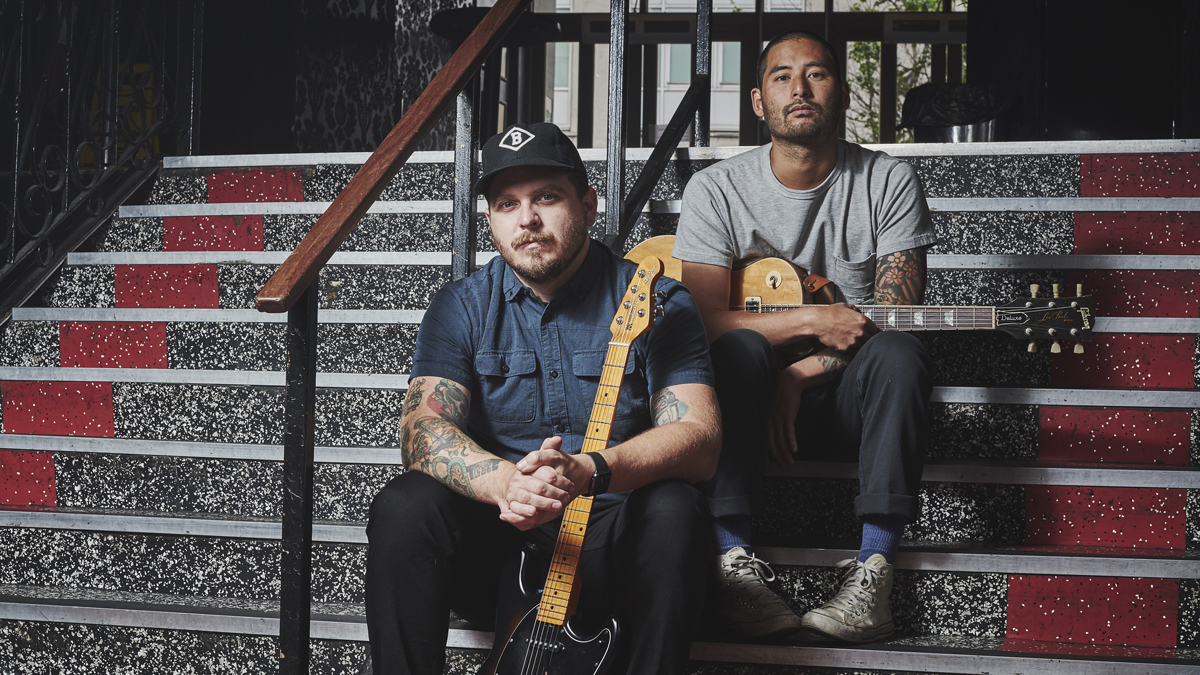
The result is yet another evolution in the Thrice canon, which traverses arms-held-high rock stompers (Scavengers, Summer Set Fire to the Rain), jazz-inflected anthems (Northern Lights) and dark, reverb-drenched post-rock (Still Life, Dandelion Wine).
In short, it’s another typically ambitious, brilliantly realized listen, and it might just be Thrice’s most sonically bold vision yet – at least until its follow-up which, as Kensrue reveals, is already well underway.
“There will be a [Horizons/]West as a companion record – it’s partially written, partially recorded, and all from the same sessions that we’ve been writing in,” he says. “There was a point where we decided to split it into two records. We were like, ‘We’ve got 20 songs that we’re playing with here, and we really like all of them.’
“Last time, we had 14 finished at the end, and then we put four on an EP [2019’s Palms – Deeper Wells],” he continues. “Which is cool, but it also feels like it never really gets its fair shake. We wanted to see all these have their own place. We’d recently come up with the whole Horizons idea that was the theme of a lot of the record, and then it seemed like something interesting to do, kind of a sunrise/sunset.”
The ability to work on another album so soon is in part down to the band’s streamlined songwriting approach – which sees the four members share audio files and work independently before congregating together to jam out their ideas – but also the means to work as they please at their newly finished studio HQ.
Although the space started solely as a practice room, draped with old Thrice banners to keep reflections down, the band eventually enlisted Ed Breckenridge’s carpentry skills to effectively soundproof the environment and enable sessions to get underway.
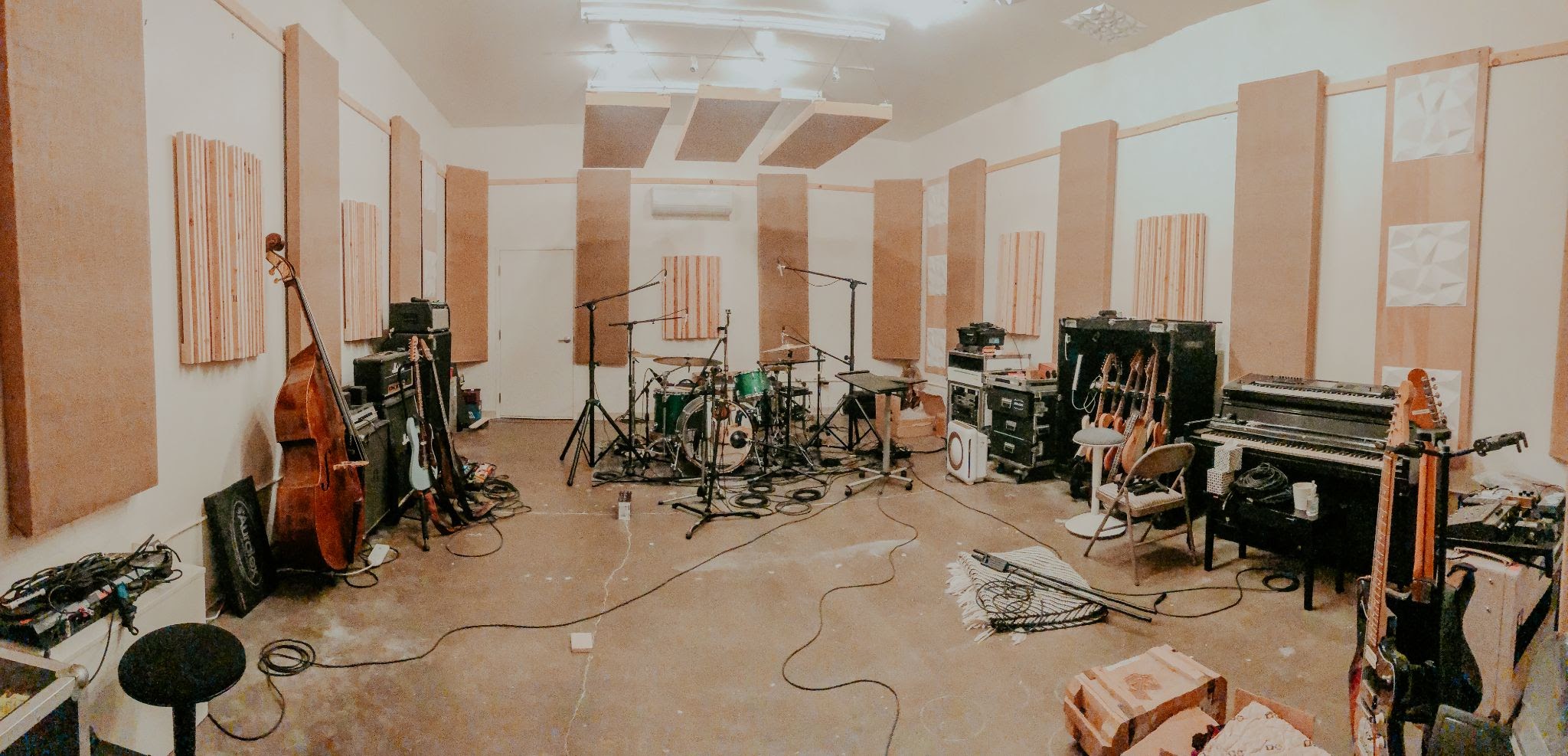
While that physical space shaped the recording, conceptual space characterizes much of the record’s guitar parts. Every ringing chord or cutting lead line is given room to breathe and bloom – a sense of expansiveness that stems from the space between the notes as much as the notes themselves. It’s a ‘playing for the song’ approach Thrice have honed over their decades together.
“I’m sure it’s a saying somewhere, but a lot of times it’s more about what you don’t play than what you do play,” Teranishi says. “And I think the older you get, the more you start to realize those things. That’s something we’ve been trying to incorporate because, especially our earlier stuff, is so dense and so busy.
“It’s getting more built into the way that we make songs,” Kensrue concurs. “It just feels more like, ‘Oh yeah, we don’t need to play anything here.’”
That’s not to say Horizons/East steers clear of heavier – or even busier – moments where required. Teranishi describes his snaking lead in Northern Lights as “the hardest thing I’ve played in a while,” while the crushing, apocalyptic climax of Summer Set Fire to the Rain recalls the band’s angst-driven Artist in the Ambulance days.
In fact, that track was very nearly even heavier, with Riley Breckenridge suggesting a particularly savage blast-beated section, but was ultimately deemed “a bit much”, laughs Kensrue.
As they have learned to trust in their approach to playing, Kensrue and Teranishi have developed a symbiotic relationship with their gear, the sound of which has become as synonymous with the group as its singer’s visceral screams.
The roots of the modern-day Thrice sound stem from the combination of D-standard and B-to-B baritone electrics, a pairing that often finds one guitarist handling the low-end and the other focusing on higher-voiced embellishments.
For the Horizons/East sessions, Teranishi relied primarily on a Fender American Professional Jazzmaster fitted with Lollar Blademaster pickups, as well as his usual go-tos: a Nash Tele, Gibson ES-335 and his trademark Baritone Jaguar. Yet the album’s experimental feel also found him turning to a guitar you might not associate with Thrice’s particular brand of explosive tones.
What sold me on the Strat was that it sounds like it could be on a ’70s Herbie Hancock record
Teppei Teranishi
“The Fibonacci sequence thing on Northern Lights is a ’70s Strat,” he reveals. “I was trying a bunch of different guitars, and I wasn’t really sure what kind of sound I wanted for it. I felt like if it was the wrong sound, it would sound really cheesy. What sold me on the Strat was that it kind of sounds like it could be on a ’70s Herbie Hancock record or something. I was like, ‘OK, that’s kind of sick – let’s keep that!’”
Teranishi also found himself turning his hand to guitar-building for the first time during the pandemic – something he admits was “probably not the smartest idea” given his complete lack of wood-working experience. Undeterred, he even went so far as to develop his own silhouette for his design.
“When I decided that I was going to build a full guitar, I probably should have found plans online and just built a Tele,” he laughs. “But I just kept going deeper and deeper into it, and I was like, ‘If I’m gonna do that, I might as well just make my own design.’ It’s basically like a Les Paul, cut in half and flipped, so it’s a double-cut, and then offset a little bit.”
While it wasn’t finished in time for the H/E sessions, the result, as you can see below, looks pretty sensational for a first build.
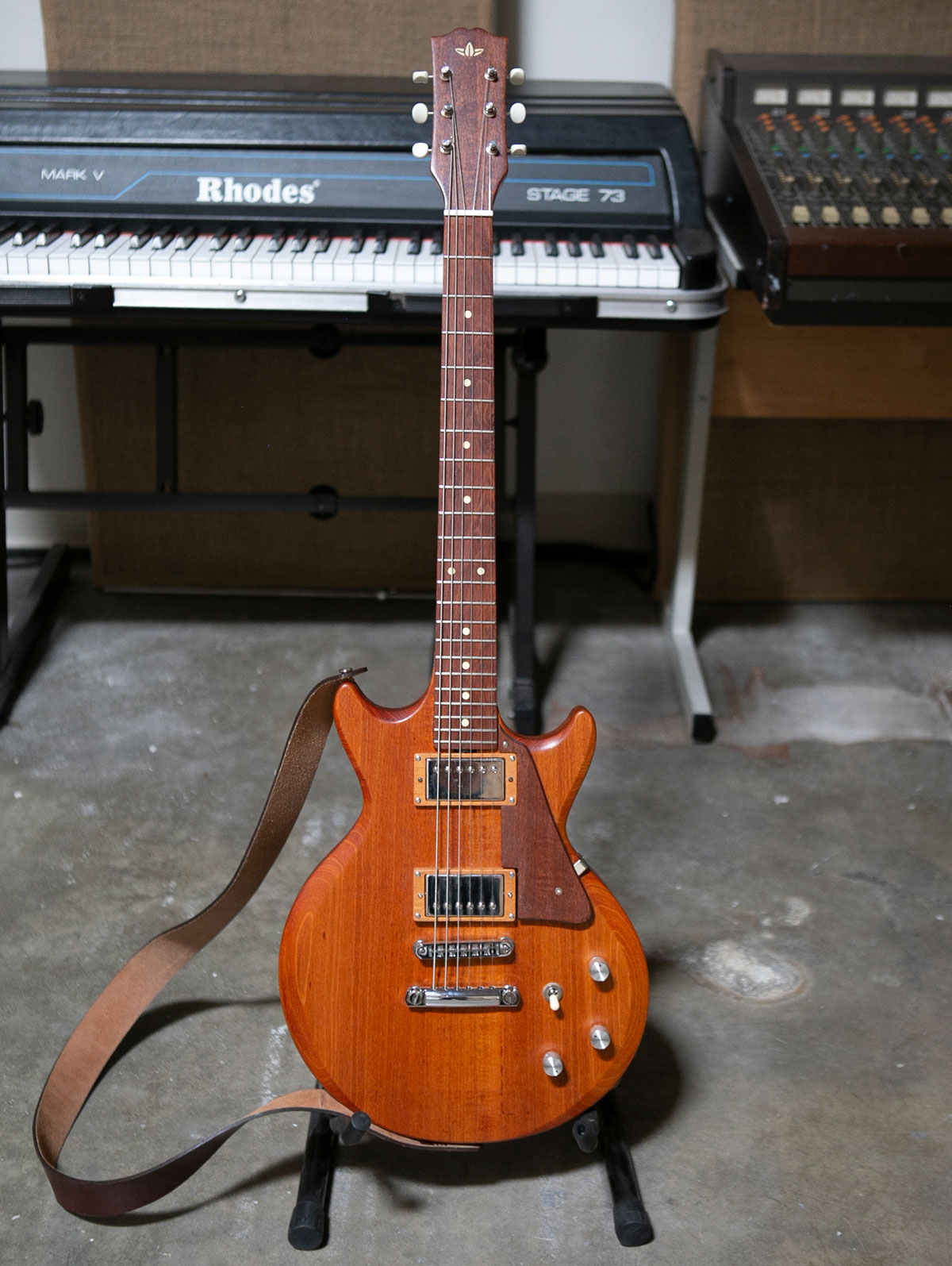
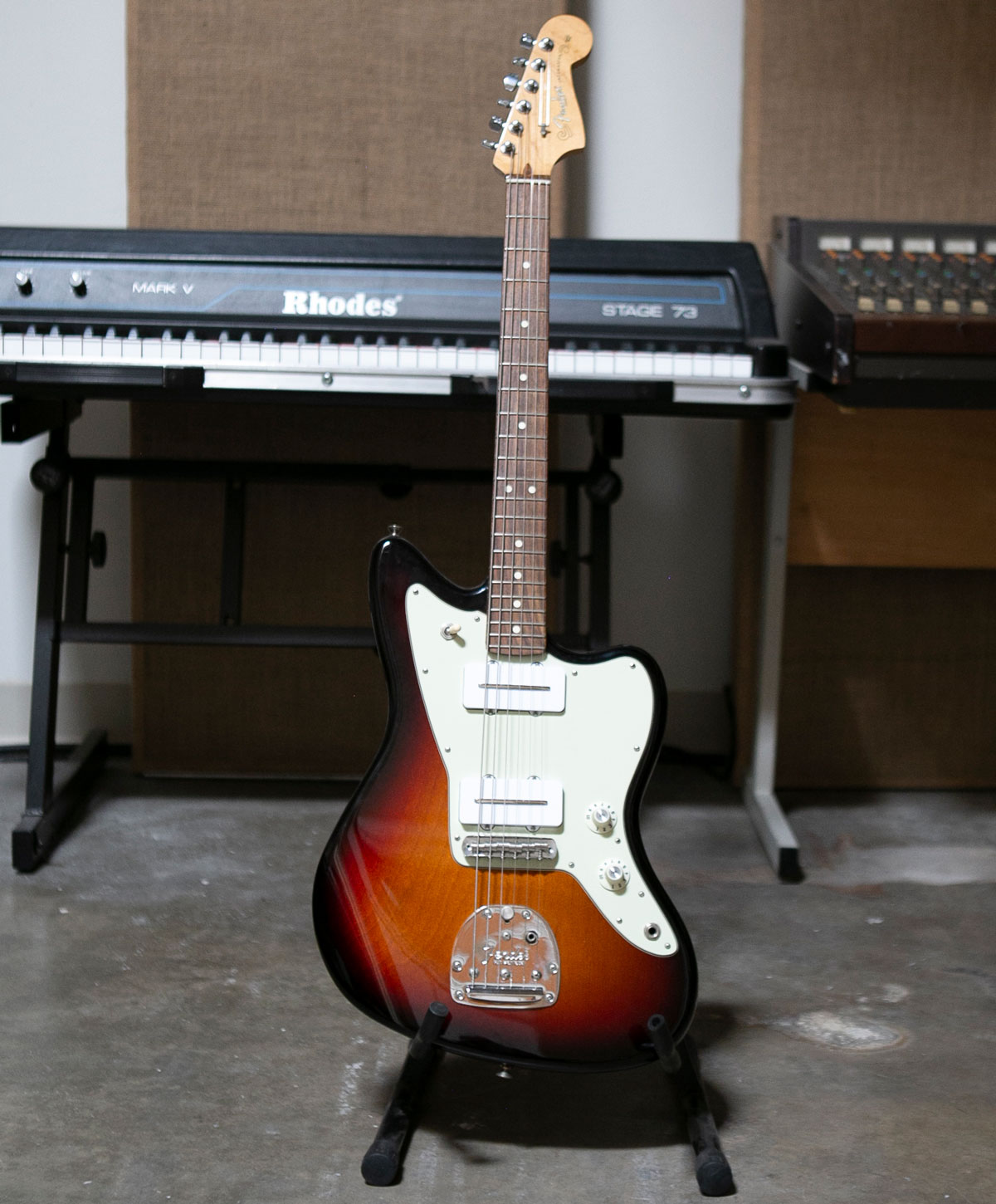
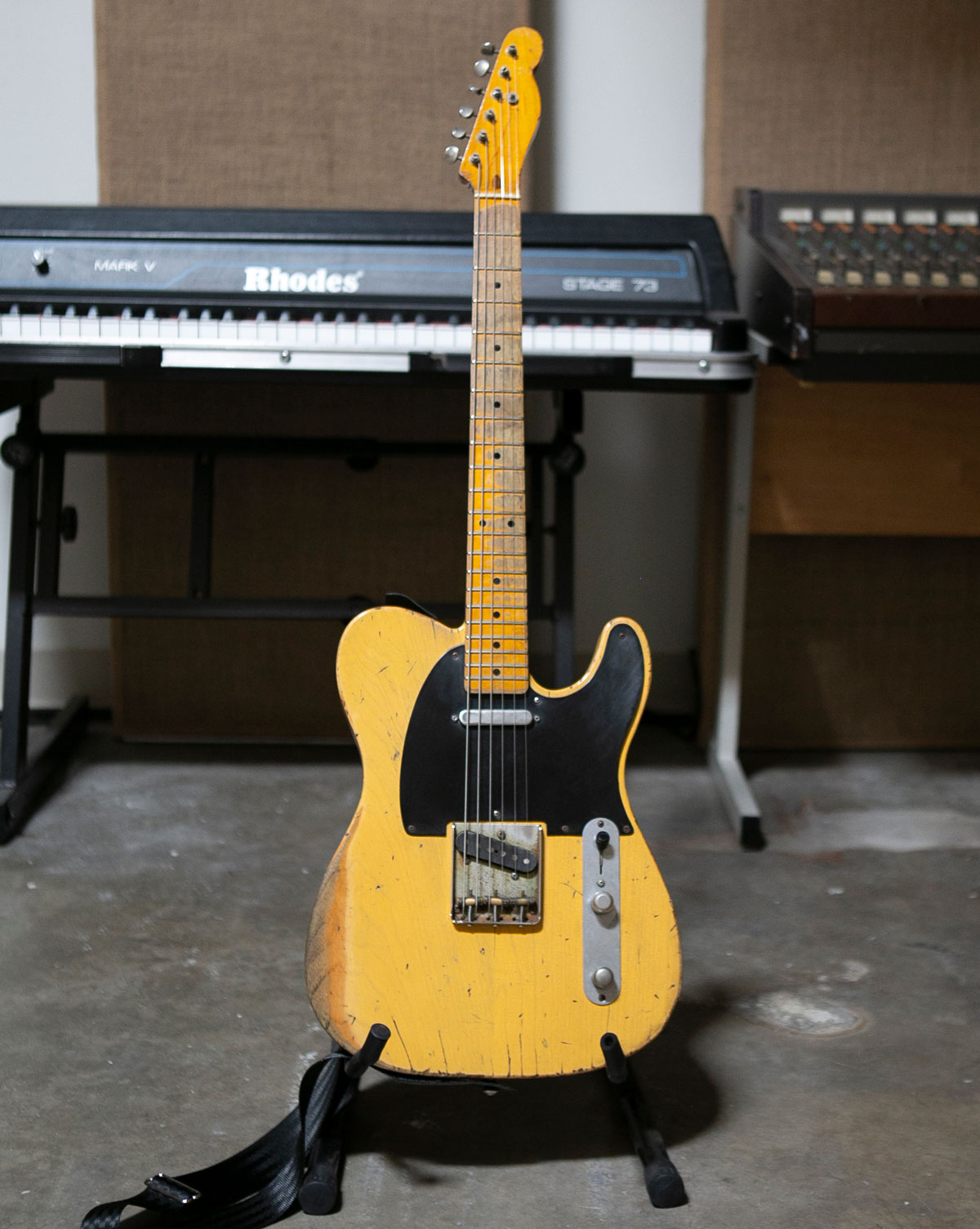
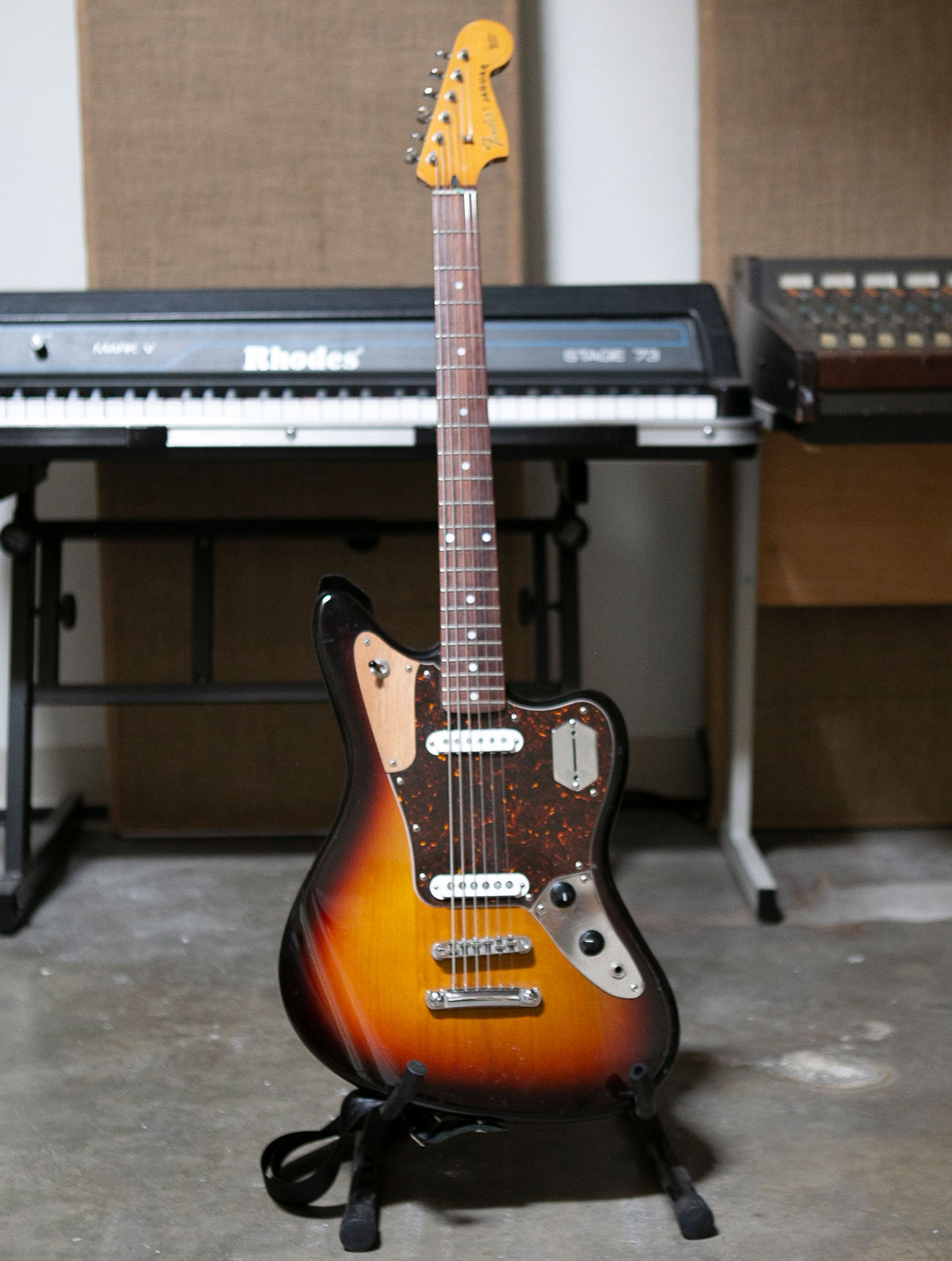
Back in the studio, core amp tones came via Teranishi’s Vox AC30 and a ’70s Marshall JMP brought to the sessions by Ed Breckenridge, while Kensrue leaned on his tried-and-tested Line 6 Helix – a floor processor so integral to his setup, he had his Ernie Ball Music Man Artist Series StingRay built around it.
Indeed, Kensrue’s signature guitar may have a color palette evocative of the golden era of guitar building, but it’s really a forward-thinking electric in classic clothing, incorporating a stereo output that enables effortless switching between different channels on dual-input amp modelers – or even separate amps per pickup.
“You always have to dial your amp a little bit towards the pickup you’re using most, and it’s limiting,” Kensrue explains of his design choices. “It sounds complicated if you haven’t used it, but you just need a foot pedal situation where you can either blend or turn on or off the two different sends. It’s immensely helpful for me.”
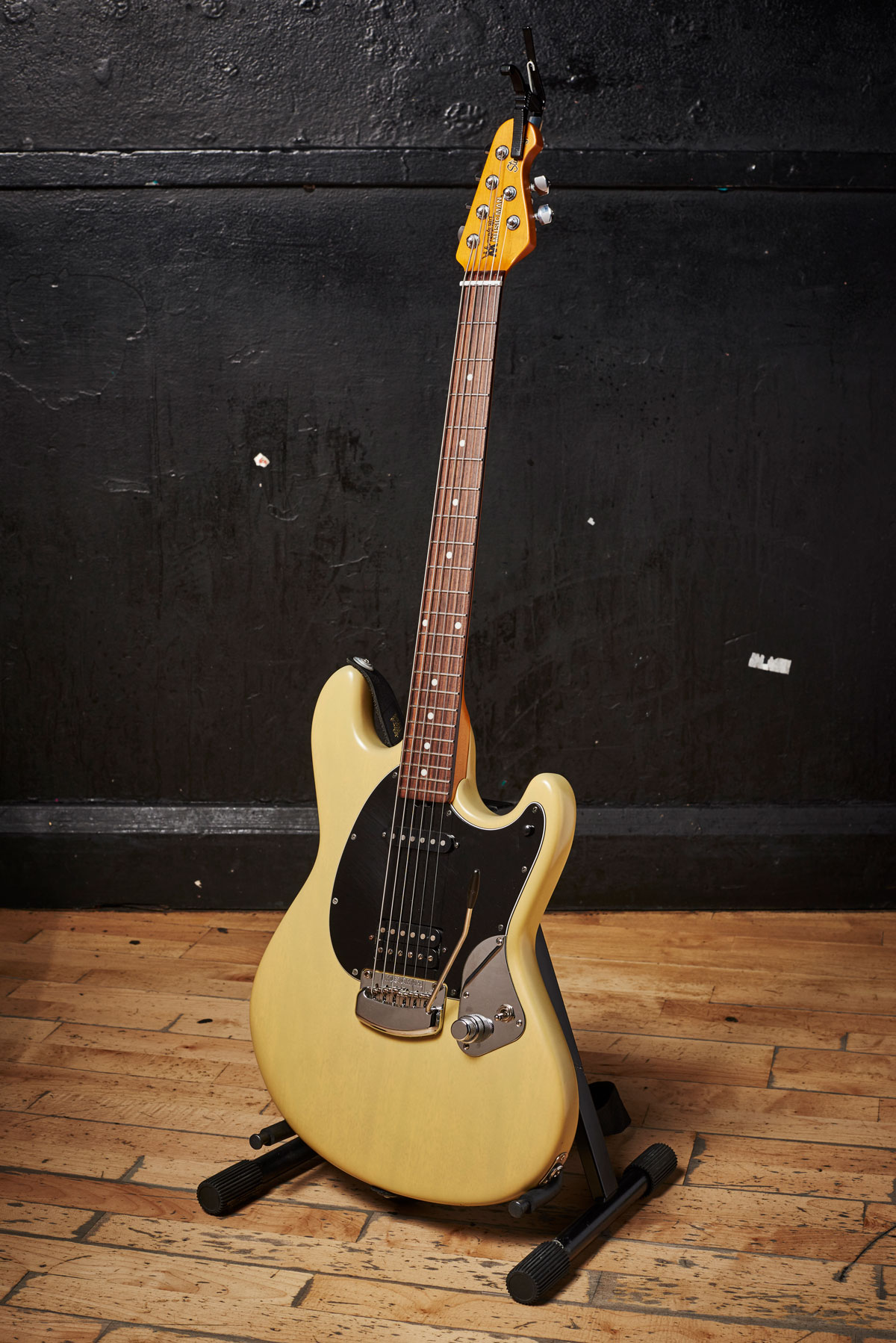
The bulk of the frontman’s tones come from a Fender-style model running into a pair of cabs with a Klon-style drive in front, but a “really weird” preset built for last year’s Helix 3.0 update also made an appearance, incorporating a wealth of new effects added by Line 6, including a Red Llama-esque fuzz, poly-detune, glitch delay and an octave reverb.
It’s the sound that lights the fuse on the tremolo-picked fireworks of Dandelion Wine, a Talk Talk-inspired track that also found the duo exploring new ways to eke more intensity out of their guitar tones.
“We had the song totally dialed, except we didn’t know what the vibe was going to land like on the choruses,” Kensrue explains. “One day, Teppei and I found our way to this really clean but ’verb’d-out tone, where when you dig in, it just blooms, but it’s not super-sustained.”
“That was an interesting use of reverb that I don’t think we’ve done before,” Teranishi muses of his Fuzzrocious Afterlife-fueled tones. “It takes up this space, but in a totally different way than overdrive or distortion would.”
This quest for progression, which ventures increasingly further afield of the alt-rock paradigm, is emblematic of Thrice’s approach to tonal landscapes and composition, and their ability to experiment through the use of boundaries.
The perpetually evolving formula has treated them well so far, and now, more than two decades into their career, with a fully functioning studio and HQ, the band look set to be more prolific than ever – and given their track record, that’s welcome news indeed.
“The machine is rolling, especially now that we have that studio running,” says Teranishi. “It’s neat to think we could pop in there and record something – whatever we want, really. We could do – I dunno – an ’80s cover EP, if we wanted to. The future is wide open, having a space on our own, and being able to do it ourselves.”
- Horizons/East is out now via Epitaph, with physical copies available from October 8.

Mike is Editor-in-Chief of GuitarWorld.com, in addition to being an offset fiend and recovering pedal addict. He has a master's degree in journalism from Cardiff University, and over a decade's experience writing and editing for guitar publications including MusicRadar, Total Guitar and Guitarist, as well as 20 years of recording and live experience in original and function bands. During his career, he has interviewed the likes of John Frusciante, Chris Cornell, Tom Morello, Matt Bellamy, Kirk Hammett, Jerry Cantrell, Joe Satriani, Tom DeLonge, Ed O'Brien, Polyphia, Tosin Abasi, Yvette Young and many more. In his free time, you'll find him making progressive instrumental rock under the nom de plume Maebe.



![A black-and-white action shot of Sergeant Thunderhoof perform live: [from left] Mark Sayer, Dan Flitcroft, Jim Camp and Josh Gallop](https://cdn.mos.cms.futurecdn.net/am3UhJbsxAE239XRRZ8zC8.jpg)









